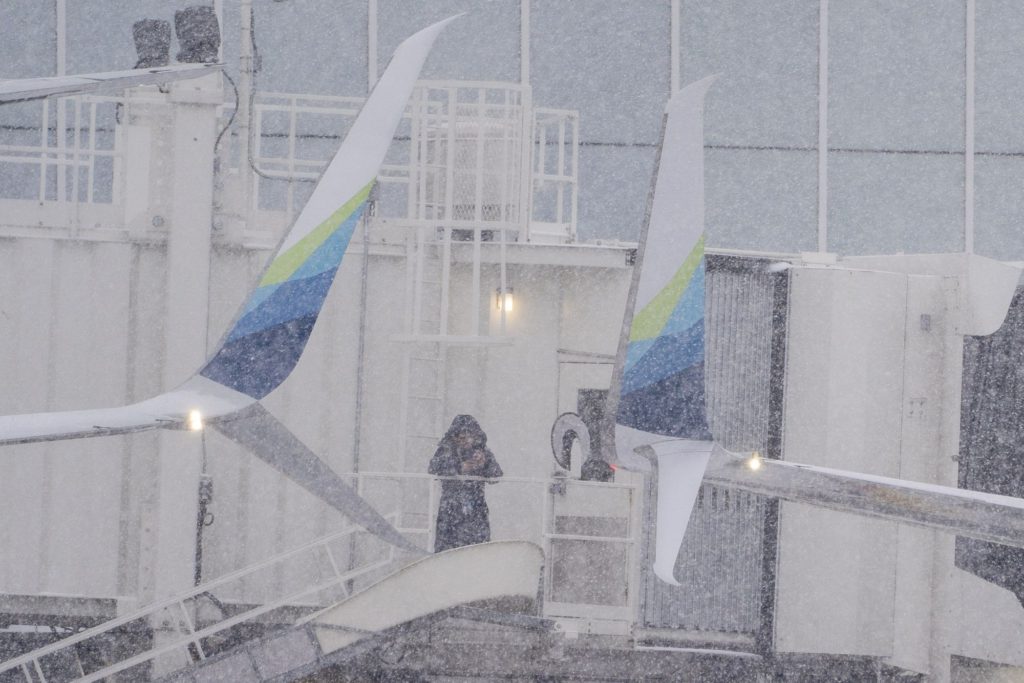The massive winter storm bearing down on the central US is threatening to rapidly strengthen into what meteorologists call a bomb cyclone that will dump blinding snow on Chicago, throw holiday travel into chaos and send an arctic blast as far south as Texas.
(Bloomberg) — The massive winter storm bearing down on the central US is threatening to rapidly strengthen into what meteorologists call a bomb cyclone that will dump blinding snow on Chicago, throw holiday travel into chaos and send an arctic blast as far south as Texas.
Wind chill watches and warnings stretch from Montana to Alabama, and Chicago could get 8 inches (20 centimeters) of snow driven by 55-mile (89-kilometer) per-hour winds, setting up a blizzard there and across the region, the National Weather Service said. The wild weather in one of the largest US air hubs will almost certainly delay and cancel flights across the country. The cold will then push east, bringing heavy snow to the eastern shores of Lake Erie and Lake Ontario. It also poses risks to energy infrastructure and crops.
Read: US Pipeline Operators Warn of High Demand Amid Cold
A storm undergoes bombogenesis and becomes a bomb cyclone when its central pressure, a measure of its strength, plunges 24 millibars in 24 hours. The conditions are ripe for this system to fit that bill, said Tom Kines, a meteorologist for AccuWeather Inc.
“This storm means business,” he said. “It is going to be a big slap in the face to a lot of people out in the Plains, the Midwest and the Great Lakes.”
An estimated 112.7 million people will travel 50 miles or more from Dec. 23 to Jan. 2, up by 3.6 million from last year and getting close to pre-pandemic levels, according to AAA, a provider of travel insurance. United Airlines Holdings Inc., Delta Air Lines Inc., American Airlines Group Inc. and Southwest Airlines Co. issued travel waivers for a vast swath of the country ahead of the storm, allowing passengers to rebook their upcoming holiday travel with no fees.
“I am sure that O’Hare will shut down for a while between the snow and the wind — and that has a domino effect,” Kines said.
For New York, Washington and the other large cities in the Northeast, the main threat will be rain and wind, according to Bob Oravec, a senior branch forecaster for the US Weather Prediction Center. While temperatures will drop late Friday in New York, there will likely be just a few flurries. But the front and buffeting winds may still make travel difficult at eastern airports.
Read also: Texas Expects Power Use to Top Its Peak-Winter Forecast Friday
In addition to the travel disruptions, arctic cold will sweep down as far as Texas and the Gulf Coast, boosting demand for electricity and natural gas as people crank their thermostats. The weather will be a test for the Texas electric grid, which buckled under an even more frigid snap in February 2021, though this time it’s not expected to last as long.
In parts of Florida, meanwhile, temperatures could drop below freezing, Kines said. That poses a risk to Florida sugarcane — much of which is still in the ground, according to Drew Lerner at World Weather Inc.
Read also: Sugarcane, Citrus Crops Face Threat from US Cold Blast
“The cold air just rockets southward across the plains,” Oravec said. “The arctic front itself is tremendously strong.”
–With assistance from Vincent Del Giudice, Joe Carroll, Mary Schlangenstein and Marvin G. Perez.
(Updates with risk to Florida sugarcane in penultimate paragraph.)
More stories like this are available on bloomberg.com
©2022 Bloomberg L.P.










